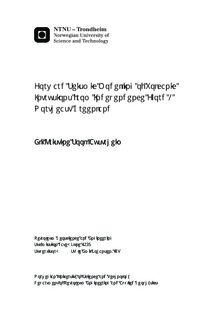Forward Seismic Modelling of Volcanic Intrusions from Independence Fjord - Northeast Greenland
Master thesis
Permanent lenke
http://hdl.handle.net/11250/240105Utgivelsesdato
2013Metadata
Vis full innførselSamlinger
Sammendrag
The purpose of this thesis is to investigate the seismic response of large-scale volcanic intrusions by using the technique of forward seismic modelling. The modelled structures are exposed on the south side of Independence Fjord in eastern North Greenland and consist of sandstones cut by mafic intrusions, and overlain by a basaltic lava sequence of plateau basalts. The modelling algorithm that has been used to generate the synthetic seismic data is based on the elastic wave propagation theory, and the densities and velocities that have been used in the modelling have been determined from the general knowledge of the different lithologies.The results show that there are strong reflections associated with the layer of plateau basalts, thereby indicating that much of the seismic wave energy is lost due to this layer. Some of the structures beneath are still visible, though not so clear. The high velocity contrasts between the layers in the model also cause numerical instabilities in the modelling algorithm, because the assumptions that the algorithm is based on is not fulfilled. By removing the layer of plateau basalts and replace it with a sandstone layer, the structures beneath become much clearer, meaning that the plateau basalts obscures the imaging of the structures beneath quite a lot. Since the uppermost volcanic layer that the seismic waves have to propagate through gives the strongest reflections, this indicates that the uppermost volcanic layer influences the imaging of the structures beneath quite a lot. Based on this it is believed that in the presence of several volcanic layers some energy get lost for each volcanic layer that the seismic waves have to propagate through, thereby making it difficult or impossible to see deep in the subsurface when many volcanic layers are present. The high velocities associated with volcanic intrusions also make the resolution of the seismic poorer.
